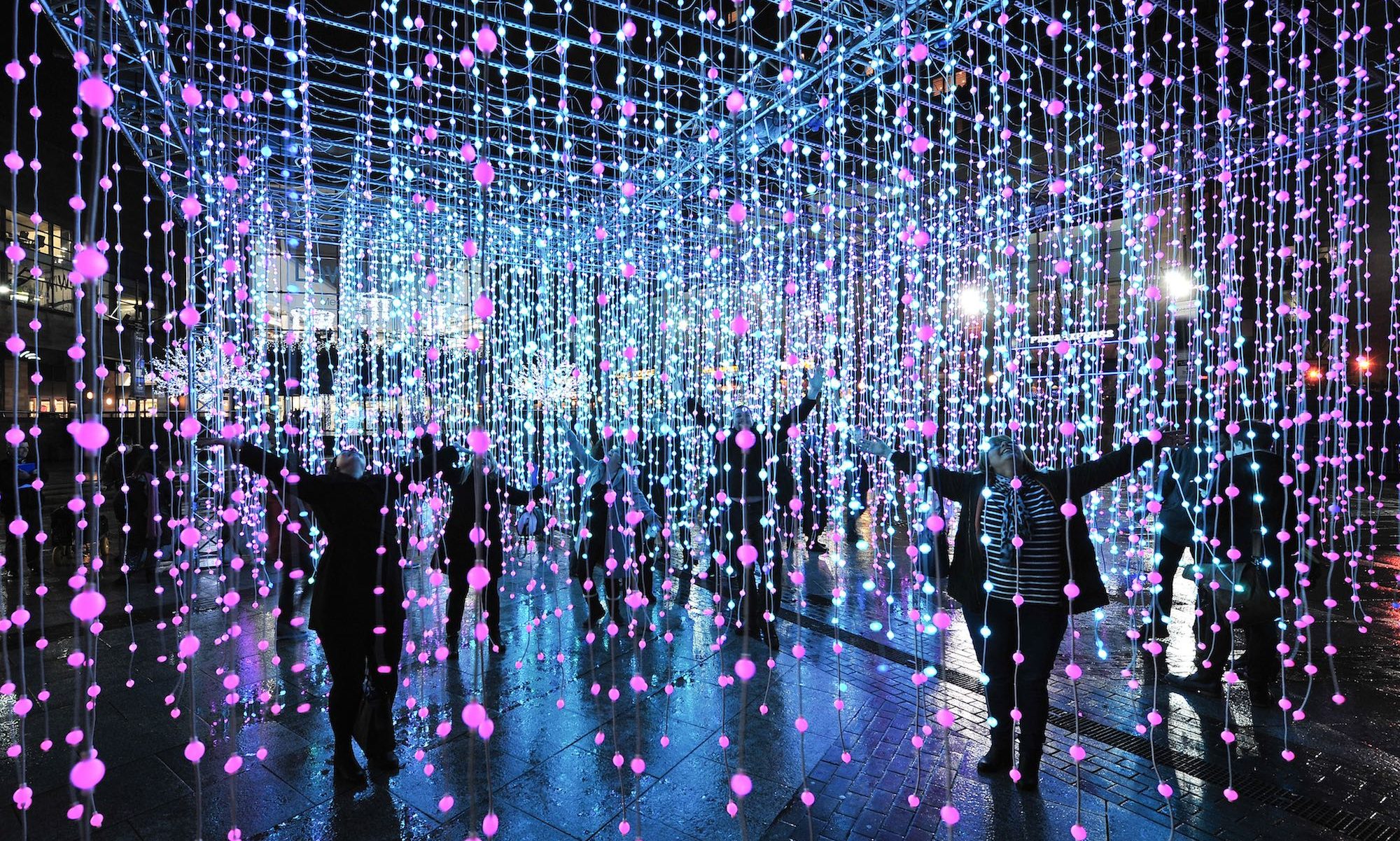Last week I made a rotating light-painting video by keeping the RGBW LED on the arm constantly on, only having the W component active.
This week I altered the behavior of the LED and tested different lighting patterns from the same perspective. First I tested blinking the LED on and off at a constant rate to see how only a partial image compared to the full image. Initially the LED was set to blink every 1 sec.
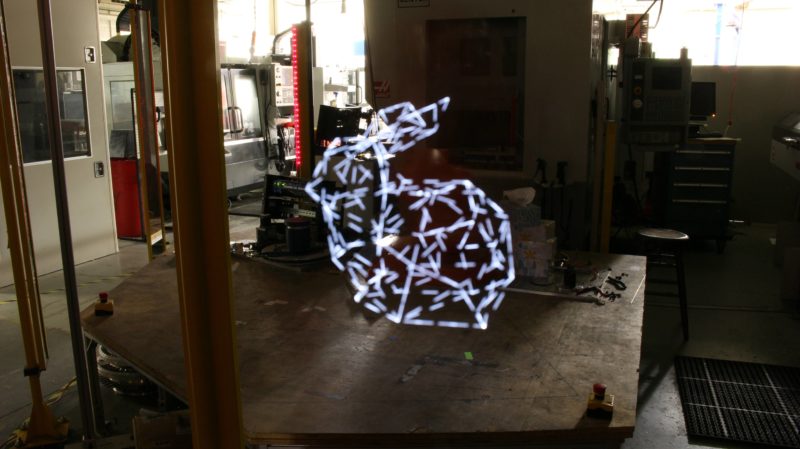
While the original image is still visible the large number of separate lines makes the image look very busy and messy. To change that effect I increased the blink time to 2 sec.

Then I increased the blink time to 4 sec.

Then I increased the blink time to 10 sec.

The original image is still discernible but the the new image is less complicated with simple lines that don’t completely connect. This style with less lines and connections is more abstract and less ridged while still remaining geometric due to the the straight lines and harsh angles.
Next I tried slowly increasing the brightness of LED repeatedly in various cycle times to see if a slow fade in could soften the harsh beginning of the lines. Initially I tried a cycle time of 2.55 seconds.

Compared to the blinking image with a cycle time of 2 sec, this image seems to have softer transitions into the lines. I then tried a cycle time of 6.5025 sec.
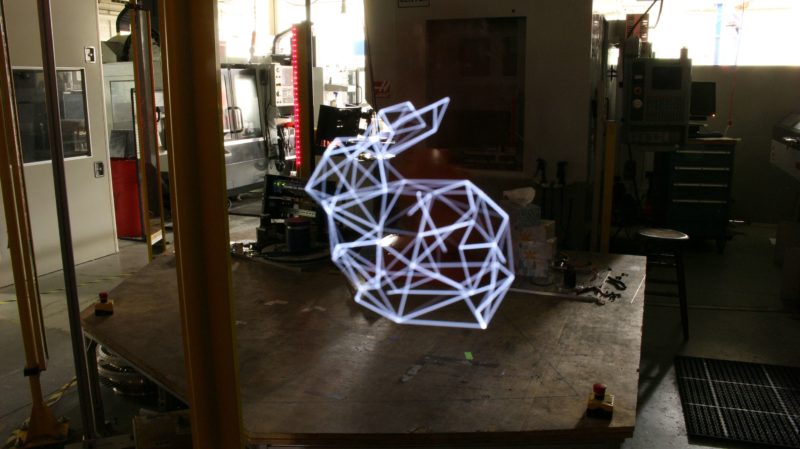
Then I tried a cycle time of 25.5 sec.
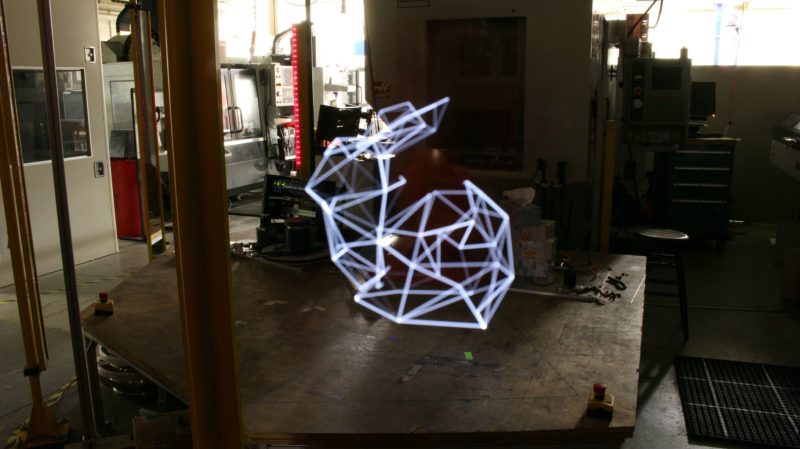
As the cycle time increase some parts of the image become brighter than others highlighting different parts of the image rather than having a single brightness.
Lastly, I tried changing the color of the LED using the RGB components of the LED by randomly setting each component every 1 sec.
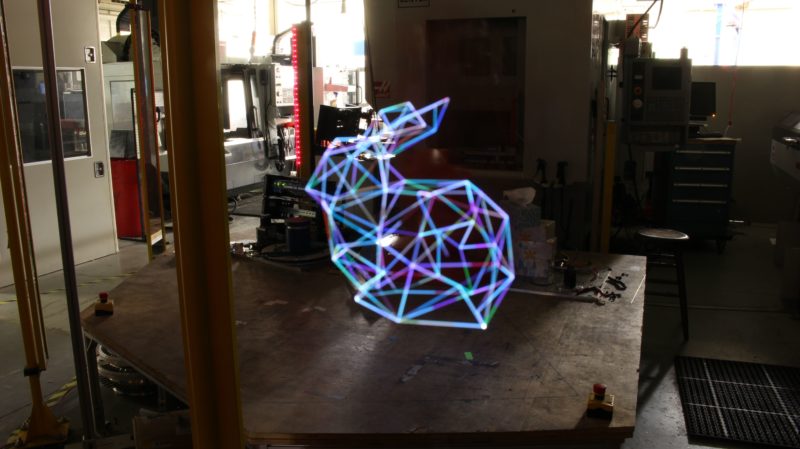
The color was able to add more dimension to the image, but a less random approach could improve it further and add focus to different parts of image.
